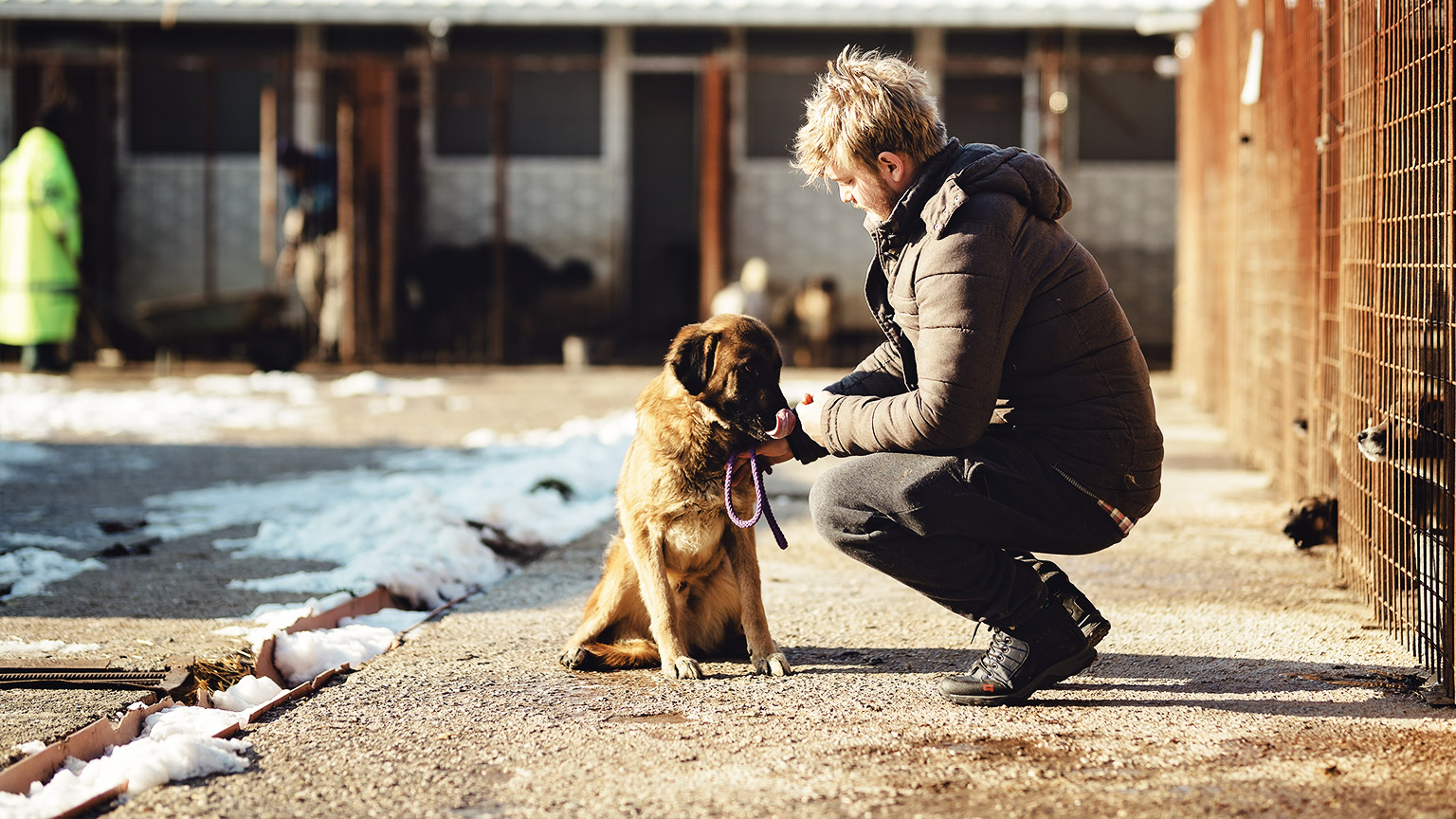Cleaning and maintaining animal housing is an integral part of maintaining hygiene and reducing the risk of disease transmission.
Animal housing should be cleaned twice a day and whenever soiled.
Animals with infectious diseases should be housed in isolation away from other animals. Your workplace may have different cleaning protocols for normal housing to isolation housing.
It is extremely important that the correct disinfectant is used, and manufacture instructions are followed to ensure housing is cleaned appropriately and any disease, bacteria or virus is killed. This will aid in reducing transmission among animals and humans. Each workplace will have their own cleaning protocol.
It is important that you follow the protocol that is set for your workplace.
Selecting and preparing appropriate cleaning products, disinfectants, and cleaning equipment will allow you to effectively clean animal housing in the workplace.
Most workplaces will use the same disinfectant and dilution regardless of the area you are cleaning. Fewer mistakes are made if everyone is using the same product and dilution. In this case, it is important that the highest level of dilution is used, to ensure that all diseases, viruses, bacteria, and/or fungi are killed in the cleaning process. If this is not the case and you are required to make up the disinfectant each use, you will need to check the manufacturer's instructions and select the most appropriate dilution for the housing and space you are cleaning.&
All disinfectants should be used according to the manufacturer's instructions. Some disinfectants will require a detergent to be used first. This is because the disinfectant will not be effective if there is any biological matter on the surface you are disinfecting. You should use the detergent to give the housing a general clean and remove any debris or biological matter. Once the cage has been cleaned with detergent the disinfectant can be used.
Examples of disinfectants
- F10® SC Veterinary Disinfectant - Product Information | F10 (f10products.co.uk)
- TRIGENE II - 5 Litre / Products list / Products / Ceva Australia
- Virkon PROFESSIONAL (lanxess.com)
- 1 (safe4-aust.com.au)
There are many more disinfectants that can be used in animal care workplaces. Each of these will have different dilution rates and contact times. When starting at a new workplace, be sure to familiarise yourself with the disinfectant used, the dilution rates, and contact times. To ensure you are using the products correctly you should always read the MSDS/SDS.
Cleaning equipment will also differ depending on the workplace and the type of housing being cleaned. For example, a hose and scrubbing broom may be used to clean and disinfect a kennel or dog run but a spray bottle and a paper towel might be used to clean a stainless-steel cage.
Examples of cleaning equipment
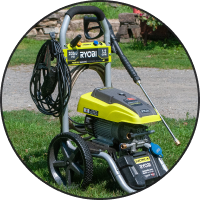
High-Pressure Hose
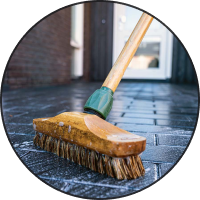
Scrubbing broom

Scrubbing brush
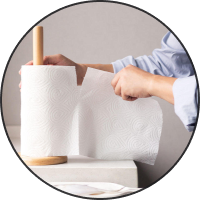
Paper towel
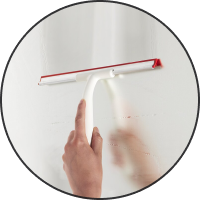
Squeegee
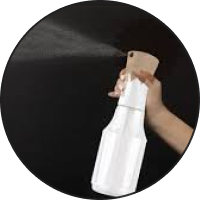
Spray bottle
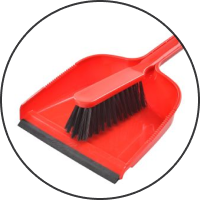
Dust pan, and brush
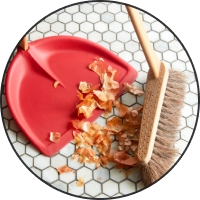
Broom
It is important to read workplace protocols to ensure you are cleaning animal housing correctly.
Before you start any task in the workplace, it is important to check the work area and surroundings to ensure it is safe to start work. This includes identifying any hazards or potential risks to your safety, the animal’s safety, or other staff members' safety.
If you identify a hazard or potential risk to safety, you need to implement control methods to reduce or eliminate this hazard and/or risk. You would also need to report this to your supervisor.
Hand and personal hygiene protocols need to be followed. This includes correctly washing your hands before you touch the animal as well as wearing PPE. Gloves should always be worn when handling animals.
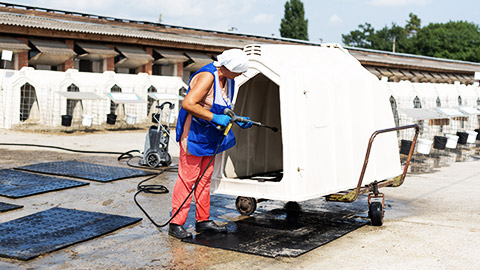
Before you approach the animal to remove it from the cage for cleaning, you need to assess the behaviour and body language.
The behaviour and body language of the animal will give you a good idea of how you should approach the animal and handle the animal.
Once you know how you will need to approach and handle the animal, you should get any restraint aids or holding cages prepared.
Once the animal has been safely removed from the housing and placed into a holding cage, you should collect and prepare any equipment you need to successfully clean the housing. This will include detergents and/or disinfectants, cleaning equipment, and a rubbish bag or bin.
The type of cleaning products and equipment will depend on the cage you are cleaning and your workplace protocols.
You should always check all equipment and materials that you will be using for the cleaning task.
This includes:
- Make sure all detergents and disinfectants are diluted according to the manufacturer's instructions
- All equipment and materials are in working order
Now to clean!
All bedding, bowls, and toys should be removed from the animal housing. These should be set aside for proper cleaning.
Any biological matter including urine and faecal matter should be removed from the housing and disposed of. Detergents and disinfectants should then be used to clean the housing and ensure any diseases are killed.
The method used to clean the cage will depend on the products being used and the type of housing being cleaned.
Here is an example:
- Apply detergent to the entire cage. Scrub the floor, walls and roof ensuring that any biological matter stuck to the surface is scrubbed off.
- Using a paper towel, remove any excess detergent.
- Spray the walls, floor, and roof with disinfectant. Leave the cage to sit for 10 minutes.
- Wipe down the walls, floor, and roof with a paper towel to remove any excess liquid in the cage.
Once you have finished the disinfecting stage, you should inspect the housing to make sure it is clean and there is no debris left. If the housing is ready to go, you can start to prepare the housing ready for the animal to return. This would include preparing fresh bedding, bowls and toys.
Once this is complete, the animal can be return safely to the housing.
Don’t forget to go back and clean the temporary housing as well as the items that were removed from the housing (bedding, toys, and bowls).
All waste must be disposed of correctly according to local government requirements. These requirements may differ from state to state.
General waste includes most rubbish such as food scraps (unless you live in a government area that has a green bin), packaging that cannot be recycled, materials that are no longer needed, kitty litter, and fecal matter. Animal waste can be disposed of in the general waste bin as long as it is not infectious.
The general waste bin has a red lid and is collected by council either weekly or fornightly.
Any materials that can be recycled such as cardboard or paper needs to be disposed of on in the yellow bin which is also collected by council.
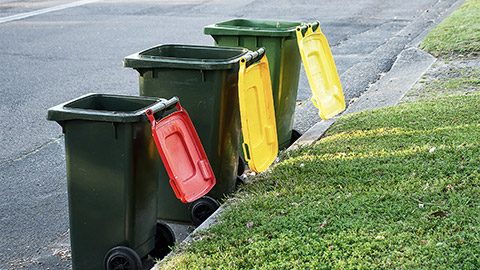
Any animal waste including waste from infectious animals, body parts, or tissues as well as deceased animals needs to be placed in a biohazardous waste bin. Deceased animals, body parts, or tissues are kept in biohazardous waste bags and stored in a freezer until authorised personnel can pick them up from the workplace.
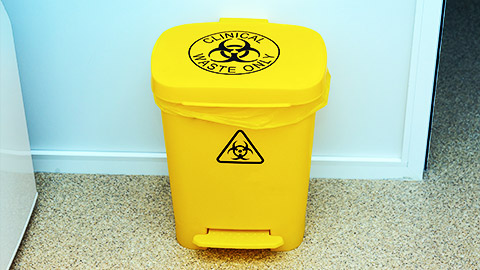
Any sharps such as needles or scalpel blades need to be disposed of in a biohazardous sharps bin.

Additional Reading
Have a read of the classification guidelines for waste.
Classification guidelines (nsw.gov.au)
